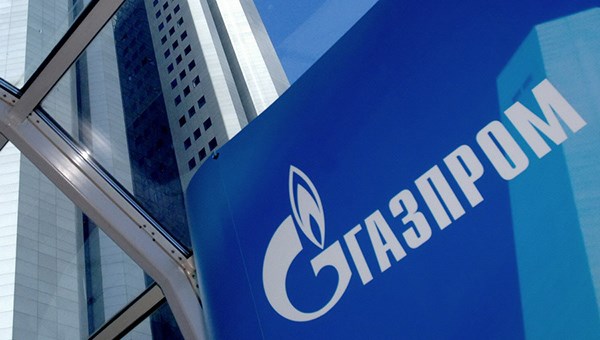Russia’s Gazprom starts selling gas to itself
Following the declining demand for Russian gas in Europe, plummeting spot prices at gas hubs and a whopping cash gap in the budget, the Russian gas monopoly Gazprom has resorted to selling gas to itself, finanz.ru reports.
In the first half of the year, the company’s gas exports to Europe fell by 8.9%. In the first six days of August, the export volume had dropped by as much as 22%.
Russia’s Interfax news agency reports that Gazprom has been assisted by a mysterious client, which bought roughly a billion cubic meters. The company included the deal in its statistics, although not a single pipeline operator has a record of the sale.
According to a source in the sector, Gazprom’s client was GazpromBank.
The bank, of which Gazprom owns 35% directly and a further 47% through the GazFond pension fund, has stepped in to save the export schedule, which is falling apart on all markets. Following the trend in Europe, former Soviet states bought 7.2% less Russian gas in the first half of the year.
GazpromBank has been buying gas on repurchase agreements, in equal portions, starting in August, sources told Interfax. The bank is buying the quantities that Gazprom pumped into European reservoirs until they were virtually overflowing. This year, 11.7 billion cubic meters of gas has been pumped into these reservoirs, double the amount for last year.
Selling gas to itself in order to adhere to the plan from above has become a norm for Gazprom. The company did the same thing at the end of last year in order to report a record annual export volume of 200 billion cubic meters. This was the quantity that Gazprom CEO Alexey Miller promised to export, but by December 27 the figure was only at 196.8 billion. A solution was found in time: Gazprom sold 4.9 billion cubic meters to its subsidiary Gazprom Marketing & Trading.
For 2019, Miller predicted “no less” than 200 billion cubic meters, but out of the company’s major clients, only Hungary, Austria and Czech Republic have increased their purchases. Gazprom has experienced a drastic decline in sales to Turkey, which cut back its purchases by a third after the Southern Gas Corridor through Azerbaijan started working. In 6 months, Turkey bought 8.1 billion cubic meters of Russian gas, compared to 12.7 billion a year ago.
The average selling price has been 13% lower than Gazprom budgeted for ($207 instead of $230-250), and so the company found itself with a $862 million cash deficit at the end of the second quarter.
By the end of the year, Gazprom’s deficit could grow to $7 billion, analysts from Sberbank CIB predicted in August. The company needs $20.8 billion to construct numerous pipelines and another $3.87 billion to send as dividends. The operational cash flow cannot cover the funds needed this year or in 2020 and 2021, when the investment program will cost an estimated $16.7 and $19.6 billion respectively.
Gazprom will need to use debt to bridge the gap. The company’s borrowing program for this year was expanded to $11.37 billion, more than double the amount for last year.
